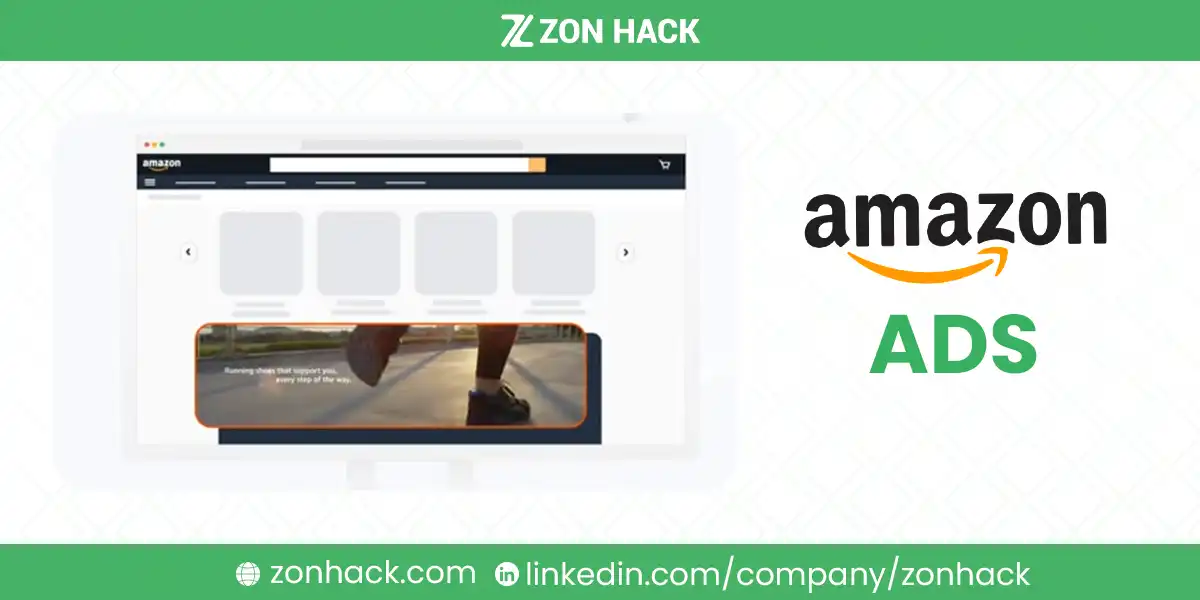Amazon Display Ads are a powerful tool to promote your products and drive sales, both on and off Amazon. However, to get the most out of your ad campaigns, it’s essential to optimize them properly. Optimization ensures that your ads reach the right audience, at the right time, while maximizing your return on investment (ROI).
In this guide, we’ll take a comprehensive look at how to optimize your Amazon Display Ads effectively.
What Are Amazon Display Ads?
Amazon Display Ads, specifically Sponsored Display Ads, allow sellers to advertise their products across Amazon’s ecosystem and third-party websites. These ads can appear on product detail pages, in the sidebar, and on external websites through Amazon’s extensive partner network. Sponsored Display Ads are unique because they help you reach customers at different stages of the buying journey, from awareness to consideration to conversion.
Why should you optimize Amazon Display Ads?
Optimizing Amazon Display Ads helps increase your visibility, improve click-through rates, reduce wasted ad spend, and boost your overall sales. It’s the key to getting more out of your advertising budget by focusing on what works and trimming what doesn’t.
How to Set Your Goal for Ad Optimizations?
Before you dive into ad optimizations, it’s important to define clear business objectives. Ask yourself: what are you trying to achieve with these ads? Do you want to increase brand awareness, drive more website traffic, or directly boost sales? The answers to these questions will guide your entire optimization process.
For example, if your goal is brand awareness, your focus should be on increasing reach and impressions. If it’s sales, then you’ll focus more on metrics like click-through rate (CTR) and conversion rate (CVR). Setting these goals will also help you define the appropriate budget, ad types, and targeting strategies.
| Goal | Key Metrics | Strategy |
| Brand Awareness | Impressions, Reach | Focus on maximizing visibility with broad targeting |
| Consideration | Click-Through Rate (CTR), Views | Target relevant audiences based on browsing history |
| Conversions (Sales) | Conversion Rate (CVR), ROAS | Optimize bids and ad creative for high intent users |
Step 1: Campaign Structuring
Organizing your ad campaigns properly is crucial for success. Start by structuring your campaigns with clear ad groups. Each ad group should focus on a specific audience segment or product theme. This not only makes your campaigns easier to manage but also allows for better control over targeting and budgeting.
For example, you might have one ad group for a new product launch targeting lifestyle shoppers and another for a seasonal sale targeting past purchasers. Segmenting your ads in this way helps you tailor your messaging and budget to specific groups, improving overall performance.
Step 2: Audience Targeting
Audience targeting is perhaps the most important factor in optimizing Amazon Display Ads. Amazon provides multiple targeting options that allow you to reach potential customers based on their shopping behavior and demographics.
Views Targeting allows you to reach people who have viewed similar products to yours on Amazon. This is great for building awareness among shoppers who are already in the market for products like yours. Purchases Targeting is even more powerful, as it lets you reach customers who have already bought similar products, indicating a higher likelihood of conversion.
Additionally, Amazon offers pre-built audience segments like in-market, lifestyle, and interest-based segments. These segments are based on Amazon’s vast shopping, streaming, and entertainment data, which allows you to target users with laser precision.
Example:
Imagine you sell yoga equipment. With in-market targeting, you could reach users currently shopping for yoga mats or fitness gear. Interest-based targeting would allow you to engage users who have shown interest in fitness-related content, while lifestyle-based targeting could focus on those who follow health and wellness trends.
Step 3: Bid Optimization
Once your campaigns are live, bidding becomes a crucial factor in their performance. Amazon allows you to choose between two main bidding models: Cost-Per-Click (CPC) and Cost-Per-Thousand Impressions (vCPM). Understanding when to use each bidding strategy is key to success.
If your goal is to drive conversions, CPC might be your best option. You only pay when someone clicks on your ad, which helps control costs. On the other hand, if brand awareness is your main objective, vCPM allows you to pay for impressions, ensuring your ads are seen by as many people as possible.
Amazon also allows bid adjustments based on real-time performance. For example, you can increase bids for audiences that are performing well or reduce bids for underperforming segments. Automatic bidding can also help if you prefer a hands-off approach, as Amazon will adjust bids automatically to maximize performance.
Pro Tip: Regularly review your bids. If your click-through rate is high but conversions are low, consider lowering your bids to avoid overspending.
Step 4: Budget Management
Optimizing your ad budget is a balancing act between spending enough to drive results without exceeding your limits. A common mistake is setting a budget that’s too low, causing your ads to stop showing midway through the day.
Start by setting a daily budget that ensures your ads are visible throughout the day. Once your campaign is running, adjust your budget based on performance. For example, increase the budget for high-performing campaigns and lower it for campaigns that aren’t delivering results.
Another strategy is using budget rules. Amazon allows you to set rules that automatically adjust your budget based on certain conditions, like increasing the budget when a campaign’s return on ad spend (ROAS) exceeds a certain threshold.
Step 5: Creative Optimization
Creating compelling ad creatives is just as important as targeting the right audience. Your ad’s creative elements—images, headlines, and descriptions—need to grab attention and encourage clicks.
Use high-quality product images that clearly showcase your products. If possible, include lifestyle images that show your product in use. For example, a fitness brand might include images of people using their products in a gym setting.
Custom headlines also play a critical role. Use headlines to highlight key product features or special offers, like “Save 20% on All Yoga Mats” or “Limited Time Offer: Buy One, Get One Free.”
A/B testing is an effective way to optimize your ad creative. By testing different images, headlines, and layouts, you can see which combination drives the best results.
Step 6: Targeting by Geography
Amazon allows you to optimize your ads by targeting specific geographical locations. This is especially useful for businesses that want to focus on certain regions or states.
For example, if you’re running a promotion that’s only available in certain cities, you can use Amazon’s location targeting feature to ensure your ads are only shown to people in those areas. This makes your ads more relevant and increases the likelihood of conversions.
Bonus: Advanced Tips for Campaign Optimization
Once your campaigns are performing well, you can take things a step further with advanced optimization strategies. One technique is audience expansion, which allows you to target new, relevant audiences that you might not have initially considered.
Another advanced tactic is to regularly A/B test different ad creatives, targeting strategies, and bidding models. This helps you identify what works best and ensures continuous improvement.
Additionally, make sure to leverage Amazon’s campaign recommendations. These automated suggestions can help you optimize your bids, budgets, and targeting based on real-time performance data.
Other Frequent Questions
What is the best way to lower my cost per acquisition?
Adjust your bids, pause poor-performing audiences, and optimize your landing pages.
How can I increase impressions for my Amazon Display Ads?
Expand your audience segments and adjust location targeting to reach a wider audience.
What metrics should I track for Sponsored Display campaigns?
Focus on CTR, CPC, lead conversion rates, and viewable impressions to gauge the effectiveness of your campaigns.
Wrapping Up
Optimizing Amazon Display Ads requires a strategic approach that focuses on goals, audience targeting, bid and budget management, and continuous monitoring. By applying these best practices and leveraging Amazon’s tools, you can ensure your campaigns are optimized for success. Keep testing and adjusting to stay ahead of the competition and maximize your ad spend.




